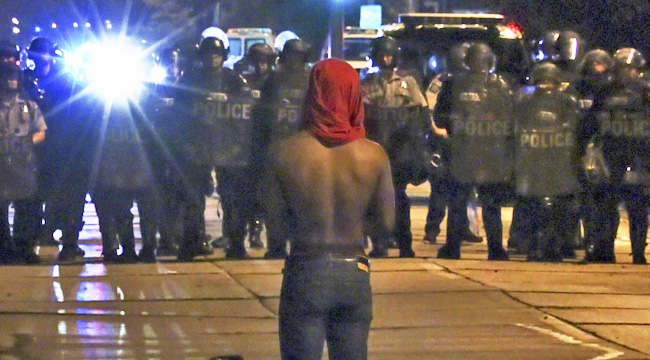
In August 2016, Milwaukee saw multiple nights of fiery protests following the fatal shooting of Sylville Smith by Officer Dominique Heaggan-Brown. Smith’s death arrived while being pursued on foot by Heaggan-Brown after fleeing a traffic stop. The resulting first-degree reckless homicide case revolved around the question of whether the officer was acting in self defense. And with the shooting happening amid multiple other high-profile police shootings of black men, local tensions skyrocketed, and Wisconsin Governor Scott Walker called in the National Guard to monitor the protests.
One of the bigger issues during the trial involved the fact that Smith — who was indisputably carrying a gun at the start of the 12-second on-foot pursuit — was not holding the firearm during both moments when Heaggan-Brown shot him. Body camera footage, which was publicly released and shown in court, pointed toward the possible discrepancy in Heaggan-Brown’s self-defense claim. Smith is shown approaching a chain-link fence with a gun in hand when he’s shot the first time. He then tossed the gun over the fence. It was at that point that Heaggan-Brown shot him again … fatally.
Milwaukee CNN affiliate WISN sums up the warring courtroom perspectives:
Prosecutors said the first shot fired by Heaggan-Brown was justifiable, but the second shot, just 1.69 seconds later, was not, because by then, Smith had dropped or tossed his gun away. “Mr. Heaggan-Brown knew at the time he fired that second shot that Sylville Smith had already disarmed himself. He knew that Sylville Smith was attempting to surrender,” Chisholm said.
But Heaggan-Brown’s defense argued he was acting as he was trained and only fired to protect himself and another officer. “The state admits that the first shot was a justified shot. And our argument is that justification did not change over the course of 1.69 seconds between shots,” defense attorney Jonathan Smith said.
Heaggan-Brown, who lost his job after the shooting due to an unrelated matter (a sexual assault charge, for which he’ll be tried in August), faced a jury of nine women and three men with four black and eight white jurors. Not only did they acquit him on the first-degree reckless homicide charge, but they also declined to choose lesser options that included second-degree reckless homicide and homicide by negligent operation of a dangerous weapon.
This acquittal follows comparable results in other 2016 cases, including last week’s not-guilty verdict for Minnesota cop Jeronimo Yanez in the fatal shooting of Philando Castile, which arrived after Tulsa Officer Betty Shelby was found not guilty of manslaughter in Terence Crutcher’s death. And down in Baton Rouge, the Justice Department cited a lack of evidence while declining to bring charges against the cops who killed Alton Sterling.
(Via CNN, WISN & Fox 6 in Milwaukee)
